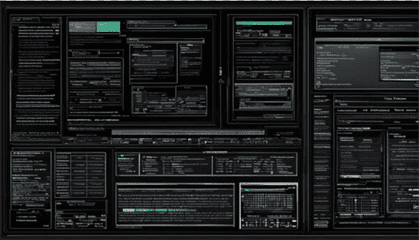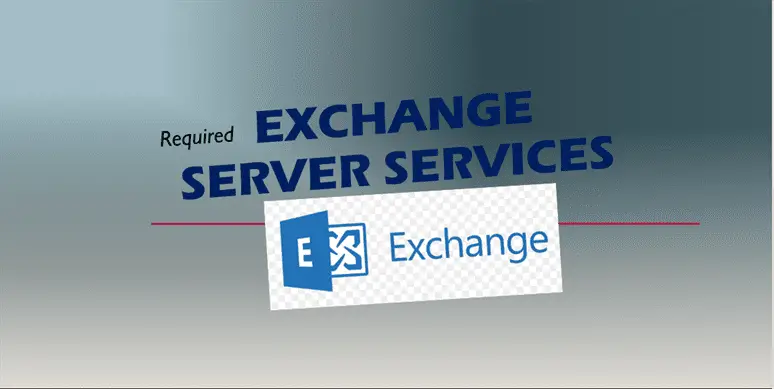Mastering Command Prompt Commands: The Ultimate Guide for IT Users
Discover the power of Command Prompt Commands in this ultimate guide for IT professionals. From basics to advanced scripts, elevate your tech skills now.
Are you an IT professional looking to boost your productivity and take control of your Windows system? Look no further than the Command Prompt. This powerful tool has been a staple of Windows operating systems for decades, allowing users to execute commands, automate tasks, and troubleshoot issues with just a few keystrokes. In this comprehensive guide, we’ll dive deep into the world of Command Prompt commands, equipping you with the knowledge to become a true command line master.
Introduction: Why Command Prompt Commands Matter
In today’s graphical user interface (GUI) dominated world, you might wonder why Command Prompt commands are still relevant. The truth is, for IT professionals and power users, the command line interface (CLI) offers unparalleled speed, flexibility, and control over your system. Whether you’re managing network configurations, automating repetitive tasks, or diagnosing system issues, Command Prompt commands are often the quickest and most efficient way to get the job done.
Let’s explore the benefits of mastering Command Prompt commands:
- Efficiency: Execute complex tasks with a single line of code
- Automation: Create batch files to automate repetitive processes
- Remote management: Administer systems remotely with ease
- Troubleshooting: Access powerful diagnostic tools not available in the GUI
- Customization: Tailor your system’s behavior to your exact needs
By the end of this guide, you’ll have a solid understanding of both basic and advanced Command Prompt commands, enabling you to work more efficiently and effectively in your IT role.
Understanding the Command Prompt Interface
Before we dive into specific commands, let’s take a moment to familiarize ourselves with the Command Prompt interface.
What is the Command Prompt?
The Command Prompt, also known as cmd.exe or simply CMD, is a command-line interpreter for Windows operating systems. It provides a text-based interface where users can enter commands to perform various system tasks, manage files and directories, and run scripts.
Accessing the Command Prompt
To open the Command Prompt:
- Press
Win + Rto open the Run dialog - Type
cmdand press Enter - Alternatively, search for “Command Prompt” in the Start menu
For administrative tasks, you’ll often need to run Command Prompt as an administrator. To do this, right-click on the Command Prompt icon and select “Run as administrator.”
Command Prompt Structure
When you open the Command Prompt, you’ll see a window with a blinking cursor. The prompt typically displays your current directory path, followed by a > symbol. For example:
C:\Users\YourUsername>This is where you’ll type your commands. After entering a command, press Enter to execute it.

Basic Command Prompt Commands
Let’s start with some essential Command Prompt commands that every IT user should know. These commands form the foundation of your command line skills and are used frequently in day-to-day tasks.
1. Directory Navigation Commands
cd (Change Directory)
The cd command allows you to navigate between directories.
Usage:
cd [directory]: Change to a specific directorycd ..: Move up one directory levelcd \: Move to the root directory of the current drive
Examples:
cd C:\Users\YourUsername\Documents
cd ..
cd \dir (List Directory Contents)
Use dir to display a list of files and subdirectories in the current directory.
Usage:
dir: List contents of the current directorydir /a: Show hidden files and directoriesdir /s: List contents of all subdirectories
Example:
dir /a /s C:\Users\YourUsername\Documents2. File Management Commands
copy (Copy Files)
The copy command allows you to duplicate files.
Usage:copy [source] [destination]
Example:
copy C:\source\file.txt D:\destination\move (Move Files)
Use move to relocate files or directories.
Usage:move [source] [destination]
Example:
move C:\oldlocation\file.txt C:\newlocation\del (Delete Files)
The del command removes files from your system.
Usage:del [filename]
Example:
del C:\unnecessary\file.txtren (Rename Files or Directories)
Use ren to change the name of a file or directory.
Usage:ren [oldname] [newname]
Example:
ren oldfile.txt newfile.txt3. System Information Commands
systeminfo
The systeminfo command provides detailed configuration information about your computer.
Usage:systeminfo
tasklist
Use tasklist to display a list of currently running processes.
Usage:
tasklist: Show all running processestasklist /svc: Display services related to each process
ipconfig
The ipconfig command shows your system’s IP configuration.
Usage:
ipconfig: Display basic IP configurationipconfig /all: Show detailed network configuration
Example:
ipconfig /all4. Network Commands
ping
Use ping to test network connectivity to a specific IP address or domain.
Usage:ping [destination]
Example:
ping www.google.comtracert
The tracert command traces the route taken by packets across an IP network.
Usage:tracert [destination]
Example:
tracert www.google.comnetstat
Use netstat to display active network connections and listening ports.
Usage:
netstat: Show active connectionsnetstat -a: Display all connections and listening ports

Advanced Command Prompt Commands
Now that we’ve covered the basics, let’s explore some more advanced Command Prompt commands that can take your skills to the next level.
1. System Maintenance Commands
sfc (System File Checker)
The sfc command scans and repairs protected system files.
Usage:sfc /scannow
chkdsk (Check Disk)
Use chkdsk to check the file system and file system metadata of a volume for logical and physical errors.
Usage:chkdsk [drive:] [parameters]
Example:
chkdsk C: /fdiskpart
diskpart is an advanced disk management tool.
Usage:
- Enter
diskpartto start the utility - Use various commands like
list disk,select disk,create partition primary
2. Power Management Commands
shutdown
The shutdown command allows you to shut down or restart your computer.
Usage:
shutdown /s: Shut downshutdown /r: Restartshutdown /t xxx: Set time delay in seconds
Example:
shutdown /r /t 60powercfg
Use powercfg to manage power settings and generate power efficiency reports.
Usage:powercfg /energy
3. Network Administration Commands
netsh (Network Shell)
netsh is a powerful command-line scripting utility for viewing and modifying network configuration.
Usage examples:
netsh wlan show profile: Display saved Wi-Fi networksnetsh interface ip show config: Show IP configuration for all interfaces
nslookup
Use nslookup to query DNS servers for information.
Usage:nslookup [domain]
Example:
nslookup www.example.com4. File System Commands
robocopy (Robust File Copy)
robocopy is an advanced file copying tool, ideal for large-scale file operations.
Usage:robocopy [source] [destination] [file(s)] [options]
Example:
robocopy C:\SourceFolder D:\DestFolder /Eattrib (Attribute)
The attrib command displays, sets, or removes attributes assigned to files or directories.
Usage:attrib [+attribute | -attribute] [filename]
Example:
attrib +h secretfile.txt
Automating Tasks with Batch Files
One of the most powerful features of the Command Prompt is the ability to create batch files. Batch files are simple text files containing a series of commands that can be executed automatically. They have a .bat file extension.
Creating a Batch File
- Open Notepad or any text editor
- Type your commands, one per line
- Save the file with a
.batextension
Example Batch File
Here’s a simple batch file that creates a backup of a directory:
@echo off
set source=C:\ImportantFiles
set destination=D:\Backup
set backupName=Backup_%date:~-4,4%%date:~-10,2%%date:~-7,2%
echo Creating backup...
robocopy %source% %destination%\%backupName% /E
echo Backup complete!
pauseSave this as backup.bat and double-click to run it.
Command Prompt Tips and Tricks
To become a true Command Prompt master, consider these advanced tips:
- Use the Tab key for auto-completion of file and directory names
- Arrow keys let you cycle through previously used commands
- Wildcards (
*and?) can be used in many commands to work with multiple files - Pipes (
|) allow you to use the output of one command as input for another - Redirection (
>and<) can send command output to files or use file content as input - Command aliases can be created for frequently used commands
Example of using pipes and redirection:
dir C:\ | find "exe" > executable_files.txtThis command lists all files in the C: drive, filters for those containing “exe”, and saves the result to a text file.
Troubleshooting Common Command Prompt Issues
Even experienced IT professionals sometimes encounter issues with Command Prompt. Here are some common problems and their solutions:
- “‘Command’ is not recognized as an internal or external command”
- Solution: Ensure the command is spelled correctly and the necessary program is installed and in your system PATH.
- “Access is denied”
- Solution: Run Command Prompt as administrator for tasks requiring elevated privileges.
- Commands not working as expected
- Solution: Use the
/?parameter after any command to view its syntax and options.
- Batch file not executing
- Solution: Check file permissions and ensure the
.batfile extension is associated with Command Prompt.
- Slow command execution
- Solution: Close unnecessary background processes and check for system resource usage.
Best Practices for Using Command Prompt Commands
To make the most of your Command Prompt skills, follow these best practices:
- Always verify commands before executing them, especially when dealing with system-critical operations
- Use caution with deletion commands (
del,rmdir) as they can permanently remove data - Create backups before making significant system changes
- Document your commands and scripts for future reference and troubleshooting
- Keep your system updated to ensure you have access to the latest commands and features
- Practice in a safe environment when learning new commands or creating complex scripts
- Use meaningful names for batch files and scripts to easily identify their purpose
Key Takeaways
- Command Prompt commands offer unparalleled efficiency and control for IT professionals
- Master basic commands like
cd,dir,copy, anddelfor everyday tasks - Advanced commands like
sfc,diskpart, andnetshprovide powerful system management capabilities - Batch files allow for task automation and increased productivity
- Always use caution and verify commands before execution, especially for system-critical operations
- Continuous learning and practice are key to becoming a Command Prompt expert
Frequently Asked Questions
- Q: What’s the difference between Command Prompt and PowerShell?
A: While both are command-line interfaces, PowerShell is more powerful and flexible, using cmdlets and object-oriented scripting. Command Prompt uses simpler text-based commands and is still widely used for its simplicity and backwards compatibility. - Q: Can I undo a command if I make a mistake?
A: Unfortunately, there’s no built-in “undo” function in Command Prompt. Always double-check commands before executing them, and consider creating backups for important data. - Q: How can I run a command with administrator privileges?
A: Open Command Prompt as an administrator by right-clicking the Command Prompt icon and selecting “Run as administrator.” - Q: Are Command Prompt commands case-sensitive?
A: No, Command Prompt commands are not case-sensitive. However, some parameters and file names may be case-sensitive depending on the context. - Q: Can I use Command Prompt commands in scripts for other languages?
A: Yes, many programming languages allow you to execute Command Prompt commands. For example, in Python, you can use thesubprocessmodule to run CMD commands. - Q: How can I learn more advanced Command Prompt techniques?
A: Practice regularly, explore Microsoft’s official documentation, and consider taking online courses or certifications in Windows system administration. - Q: Is it safe to download and run batch files from the internet?
A: It’s generally not recommended to run batch files from untrusted sources. Always review the content of a batch file before running it to ensure it doesn’t contain malicious commands. - Q: Can I use Command Prompt to manage remote computers?
A: Yes, tools like PsExec and Windows Remote Management (WinRM) allow you to execute Command Prompt commands on remote systems. - Q: How can I customize the appearance of my Command Prompt window?
A: Right-click the title bar, select “Properties,” and adjust settings like font, color, and window size to your preference. - Q: Are there any alternatives to Command Prompt for Windows?
A: Yes, alternatives include PowerShell, Windows Terminal, and third-party tools like ConEmu or Cmder, which offer enhanced features and customization options.
By mastering Command Prompt commands, you’re equipping yourself with a powerful toolset that can streamline your IT work and solve complex problems efficiently. Remember, the key to becoming proficient is regular practice and a willingness to explore new commands and techniques. Happy commanding!
Related Posts:






